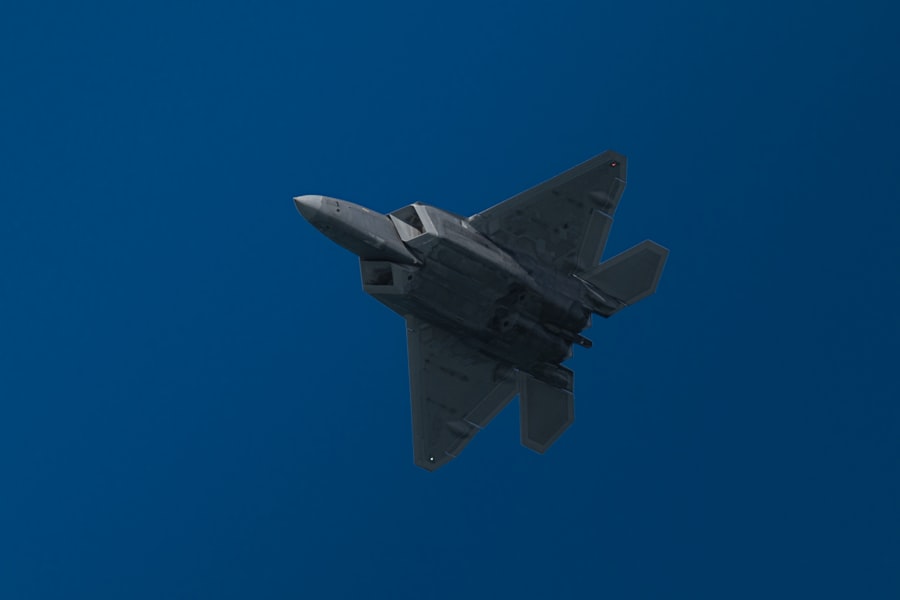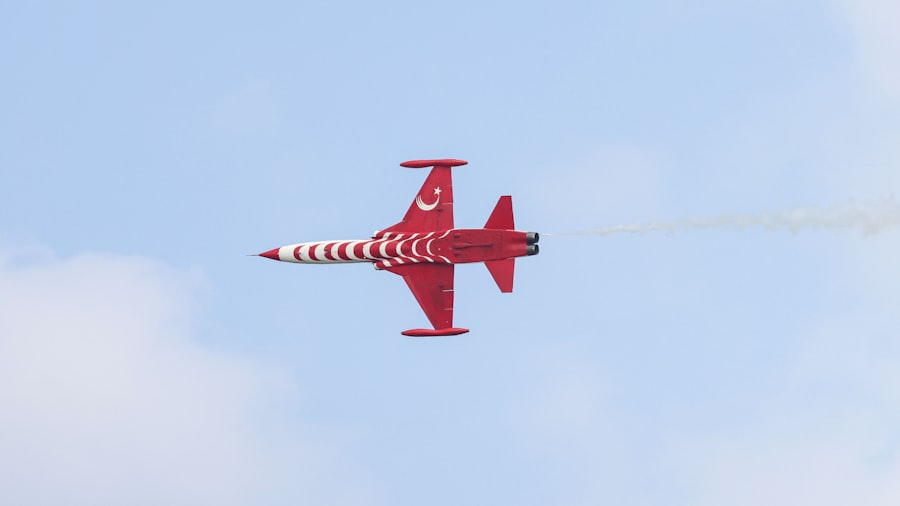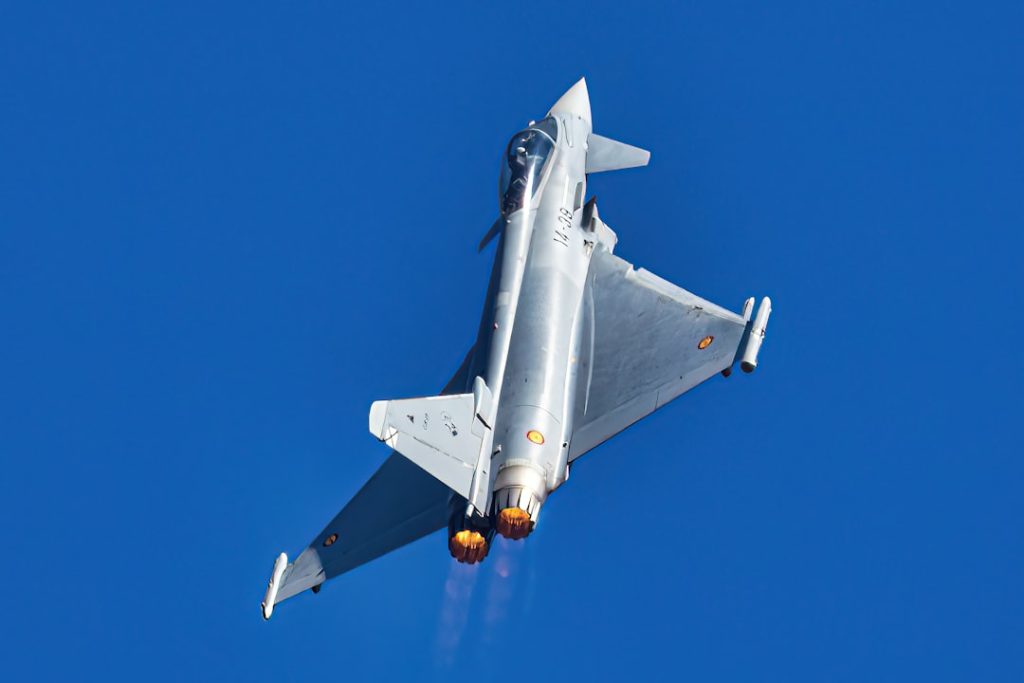The Eurofighter Typhoon is a state-of-the-art multirole combat aircraft that has become a cornerstone of modern air forces across Europe and beyond. Developed through a collaborative effort among several nations, including the United Kingdom, Germany, Italy, and Spain, the Eurofighter represents a significant leap in military aviation technology. Its inception can be traced back to the 1980s when the need for a next-generation fighter was recognized amid the changing dynamics of global military power.
The aircraft was designed to replace older models and to provide a versatile platform capable of engaging in air-to-air and air-to-ground operations. The Eurofighter Typhoon is not merely a product of advanced engineering; it embodies the spirit of international cooperation in defense technology. The program has brought together various aerospace companies and defense ministries, fostering collaboration that has resulted in a highly capable aircraft.
With its first flight in 1994 and subsequent entry into service in 2003, the Eurofighter has continually evolved, adapting to the demands of modern warfare while maintaining its core capabilities. Its design philosophy emphasizes agility, speed, and advanced avionics, making it a formidable presence in the skies.
Key Takeaways
- The Eurofighter is a state-of-the-art multirole combat aircraft designed for air superiority and ground attack missions.
- Its advanced technology and features include a sophisticated radar system, advanced avionics, and a highly maneuverable design.
- The Eurofighter has demonstrated superior performance in combat, with a proven track record in various international conflicts.
- It plays a crucial role in air defense and security, providing a deterrent against potential threats and ensuring airspace sovereignty.
- International collaborations and partnerships have been key to the success of the Eurofighter program, with multiple countries involved in its development and production.
Advanced Technology and Features
At the heart of the Eurofighter Typhoon’s capabilities lies its advanced technology, which sets it apart from other combat aircraft. One of its most notable features is its highly sophisticated avionics suite, which includes a digital fly-by-wire control system that enhances maneuverability and stability. This system allows pilots to execute complex aerial maneuvers with precision, providing a tactical advantage in dogfights and other combat scenarios.
The aircraft’s cockpit is equipped with a glass display that integrates various data sources, giving pilots real-time situational awareness and enabling them to make informed decisions quickly. Another significant technological advancement is the Eurofighter’s radar system. The Captor-E radar, an electronically scanned array (AESA) radar, offers superior detection and tracking capabilities compared to traditional radar systems.
This allows the Typhoon to engage multiple targets simultaneously while maintaining a low probability of detection by enemy systems. The radar’s ability to operate in various modes—such as air-to-air, air-to-ground, and ground surveillance—enhances the aircraft’s versatility across different mission profiles. Additionally, the integration of advanced sensor fusion technology allows for seamless data sharing between onboard systems, further enhancing operational effectiveness.
Superior Performance in Combat

The Eurofighter Typhoon is renowned for its exceptional performance in combat situations, characterized by its speed, agility, and versatility. With a maximum speed exceeding Mach 2 and a service ceiling of around 65,000 feet, the Typhoon can operate effectively at high altitudes and engage adversaries at long ranges. Its thrust-to-weight ratio is among the best in its class, enabling rapid acceleration and impressive climb rates that are crucial during aerial engagements.
This performance is complemented by its advanced aerodynamic design, which includes canards and a delta wing configuration that enhance maneuverability. In combat scenarios, the Eurofighter has demonstrated its effectiveness through various exercises and real-world operations. For instance, during NATO air policing missions over Eastern Europe, the Typhoon has successfully intercepted and monitored unidentified aircraft, showcasing its ability to respond swiftly to potential threats.
Furthermore, its multirole capabilities allow it to conduct precision strikes against ground targets while maintaining air superiority. The integration of precision-guided munitions enhances its lethality, making it a formidable opponent on the battlefield.
Role in Air Defense and Security
| Role | Responsibilities |
|---|---|
| Air Defense | Protection of airspace from unauthorized intrusion or attack |
| Security | Ensuring the safety and protection of personnel, facilities, and resources |
| Surveillance | Monitoring and detecting potential threats in the air and on the ground |
| Response | Quick and effective reaction to security breaches or hostile actions |
The Eurofighter Typhoon plays a critical role in national and collective air defense strategies across Europe. As tensions rise in various regions, the need for robust air defense systems has become increasingly apparent. The Typhoon’s capabilities make it an ideal platform for intercepting hostile aircraft and protecting sovereign airspace.
Its deployment in NATO’s air policing missions exemplifies its strategic importance; it serves as a deterrent against potential aggressors while reassuring allied nations of their security commitments. In addition to its defensive role, the Eurofighter contributes to broader security operations by participating in multinational exercises and humanitarian missions. Its versatility allows it to adapt to various operational environments, whether conducting search-and-rescue operations or providing support during natural disasters.
The aircraft’s ability to operate alongside other NATO assets enhances interoperability among allied forces, ensuring a cohesive response to emerging threats. This multifaceted role underscores the Eurofighter’s significance not only as a combat aircraft but also as a vital component of international security frameworks.
International Collaborations and Partnerships
The development and operational deployment of the Eurofighter Typhoon are marked by extensive international collaborations that have shaped its capabilities and production processes. The program is a joint venture involving several European nations, each contributing unique expertise and resources. The collaboration extends beyond mere manufacturing; it encompasses research and development efforts aimed at pushing the boundaries of aerospace technology.
This partnership model has allowed for shared costs and risks while fostering innovation through diverse perspectives. Moreover, the Eurofighter program has established partnerships with various defense contractors worldwide, enhancing its global reach. Companies such as BAE Systems, Airbus Defence and Space, and Leonardo have played pivotal roles in the aircraft’s design and production.
These collaborations have not only strengthened the Eurofighter’s technological foundation but have also created jobs and stimulated economic growth within participating countries. As nations seek to modernize their air forces, the Eurofighter’s reputation as a reliable and capable platform continues to attract interest from potential international customers.
Training and Support for Eurofighter Pilots

Effective training is essential for maximizing the capabilities of any advanced combat aircraft, and the Eurofighter Typhoon is no exception. Comprehensive pilot training programs have been developed to ensure that operators are well-prepared to handle the complexities of flying this sophisticated machine. These programs encompass both theoretical instruction and practical flight training, utilizing state-of-the-art simulators that replicate real-world scenarios.
This approach allows pilots to hone their skills in a controlled environment before transitioning to actual flight operations. In addition to initial training, ongoing support for Eurofighter pilots is crucial for maintaining operational readiness. Continuous professional development programs are implemented to keep pilots updated on new technologies and tactics as they evolve.
Furthermore, maintenance crews receive specialized training to ensure that the aircraft remains in peak condition throughout its service life. This commitment to training and support not only enhances pilot proficiency but also contributes to overall mission success by ensuring that every aspect of the Eurofighter’s operation is executed with precision.
Future Upgrades and Developments
As military aviation technology continues to advance rapidly, the Eurofighter Typhoon is poised for future upgrades that will enhance its capabilities even further. Ongoing development efforts focus on integrating new systems that improve situational awareness, lethality, and survivability in contested environments. For instance, plans are underway to incorporate next-generation sensors and weapons systems that will expand the aircraft’s operational envelope and allow it to engage emerging threats effectively.
One significant area of focus is the integration of advanced electronic warfare capabilities that will enable the Eurofighter to operate effectively in environments with sophisticated enemy defenses. Additionally, enhancements to its data link systems will facilitate improved communication with other platforms within joint task forces, ensuring seamless coordination during complex operations. These upgrades are not merely incremental; they represent a commitment to maintaining the Eurofighter’s relevance in an ever-evolving battlefield landscape.
The Eurofighter’s Impact on Modern Warfare
The Eurofighter Typhoon stands as a testament to what can be achieved through international collaboration in defense technology. Its advanced features, superior performance in combat scenarios, and vital role in air defense underscore its significance in modern warfare. As nations face increasingly complex security challenges, the Eurofighter continues to evolve through ongoing upgrades and partnerships that enhance its capabilities.
The impact of the Eurofighter extends beyond individual nations; it shapes collective security strategies within NATO and other alliances. By providing a reliable platform for air superiority and ground attack missions, it reinforces deterrence against potential adversaries while fostering cooperation among allied forces. As military aviation continues to advance into new frontiers, the Eurofighter Typhoon will undoubtedly remain at the forefront of aerial combat operations for years to come.


